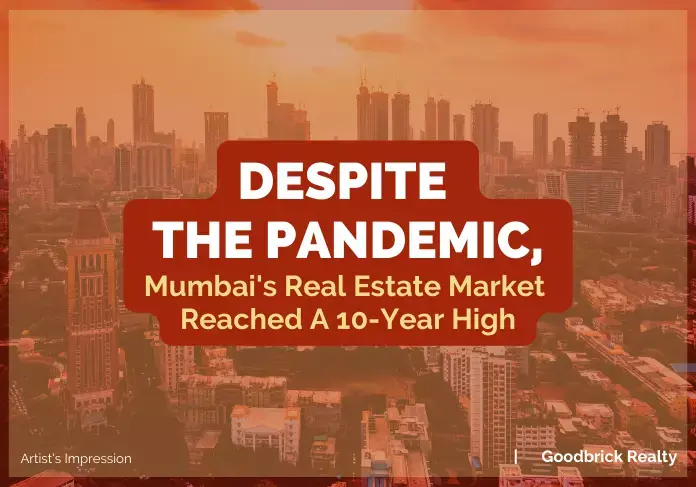
Overcoming the pandemic’s effects, Mumbai generated over Rs 477 crore from more than 8,100 transactions in January, setting a new 10-year high in property stamp duty collection.
According to data from Maharashtra’s Inspector General of Registration, the number of real estate property registrations was down 20% from a year ago, but revenue went up 56%. Even with the drop, the number of people who registered in January 2022 was higher than in any January before Covid.
Last year, the same time period had a relatively low stamp duty rate window of 3%, and Covid did not hit as hard.
“Because of the third wave, uncertainty has influenced emotions, which is shown in January registrations,” stated Shishir Baijal, Knight Frank India’s CMD. “However, as we have previously seen, we consider this slowdown as a passing phase, and the market will regain speed when the infection rate drops.”
Despite a government statement removing property tax on residences smaller than 500 sq ft, apartments larger than 500 sq ft amounted to 60% of all residential real estate sales in Mumbai. In January, the 500-1,000 sq ft house market dominated 45% of all sales.
“Despite the third wave of the outbreak, both inquiry and conversion to actual sales kept showing an uptick in January,” said Kamal Khetan, CMD of Sunteck Realty.
Although there were fewer site visits in the first half of the month, the use of digital platforms helped to increase sales and customer communication, reducing the wastage of time until site visits began. Both the value homes and Luxury housing markets have experienced steady growth.
Sunteck Realty announced a 29% increase in pre-sales at Rs 352 crore during the December quarter. The listed corporation recorded a 23% year-on-year increase in nine-month pre-sales @ Rs 800 crore.
The Mumbai real estate market was still dominated by the city’s western and central suburbs. In January 2022, 52% of the registrations came from the western suburbs, which was the most popular market. Only 34% of the registrations came from the central suburbs.
As per Mr.Baijal “Over the next two weeks, the Union Budget and monetary policy moves will be critical in catalyzing latent demand”. He also said “We continue to hope that the central bank and government will proceed with their growth-oriented policies.”
According to experts, with the Reserve Bank retaining its low-interest-rate policy and developers providing appealing deals, the sales curve has taken up again, with monthly sales exceeding even pre-pandemic levels observed in 2018 and 2019.
Since the state government promised a drop in stamp duty rates in 2020 to support the real estate sector and approximately 260 related industries, the Mumbai real estate market has been bustling with activity.
The lower stamp duty has resulted in an increase in the number of sales across all market sectors, namely luxury, middle-income, and affordable housing. Even though the reduced stamp duty benefit window ended in 2020, there is still a lot of activity in the real estate markets of the major cities in Maharashtra.